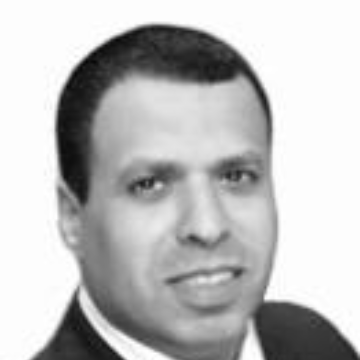
Sultan Aljahdali
Work place: Department of Information technology, College of Computers and Information technology, Taif University, Saudi Arabia
E-mail: aljahdali@tu.edu.sa
Website:
Research Interests: Computational Engineering, Medical Informatics, Software Engineering, Computer systems and computational processes, Computer Architecture and Organization, Hardware Security, Information Security, Network Security, Medical Image Computing, Information-Theoretic Security
Biography
Sultan Aljahdali is the Dean of the College of Computers and Information Technology at Taif University, Kingdom of Saudi Arabia. Before joining Taif University, he has served as Information Technology Manager at General Authority of Civil Aviation and Saudi Airlines respectively. Dr. Aljahdali received the B.S from Winona State University, M.S. with honor from Minnesota State University Mankato, and Ph.D., in Information Technology from George Mason University in Fairfax, Virginia. He is the recipient of the prestigious higher education scholarship from the government of Saudi Arabia for pursuing his B.S., M.S., and Ph.D., in a row. Dr. Aljahdali has made research contributions on software testing, developing Software Reliability Models, Soft Computing for Software Engineering, Computer Security, Reverse Engineering and Medical Imaging. He is an author or co-author of over 40 peer reviewed academic publication. He is a member of professional societies like ACM, IEEE, Arab Computer Society (ACS) and International Society for Computers and Their Applications (ISCA). He is in the editorial board of many international journals like International Journal of Science and Advanced Technology, International Journal of Computer Technology and Applications, World of Computer Science and Information Technology, Journal of Intelligent Computing, International Journal of Computer Science & Emerging Technologies, Universal Journal of Computer Science and Engineering Technology. He functioned as the General Chair, Program Chair, Session Chair, and member of the International Program Committee of the international conferences sponsored by various professional societies or organizations including the IEEE Computer Society, ACS and ISCA. He is also the conference chair of the forthcoming 24th International Conference on Computer Applications in Industry and Engineering (CAINE 2011) November 12-14, 2011, Honolulu, Hawaii, USA.
Author Articles
Innovative Large Scale Wireless Sensor Network Architecture Using Satellites and High-Altitude Platforms
By Yasser Albagory Fahad Al Raddady Sultan Aljahdali Omar Said
DOI: https://doi.org/10.5815/ijwmt.2014.02.02, Pub. Date: 8 Mar. 2014
Wireless sensor network has many applications and very active research area. The coverage span of this network is very important parameter where wide coverage area is a challenge. This paper proposes an architecture for large-scale wireless sensor network (LSWSN) based on satellites and the High-Altitude Platforms (HAP) where the sensor nodes are located on the ground and a wide coverage sink station may be in the form of a satellite or a network of HAPs. A scenario is described for multilayer LSWSN and a study for the system requirements has been established showing the number of Satellites, HAPs and coverage per each sink according to the elevation angle requirements. The Satellite-HAP-Sensor multilayer LSWSN architecture has the feasibility for effective energy and earth coverage and is optimum for covering largely sparse regions.
[...] Read more.Enhancing the Capacity of Stratospheric Cellular Networks Using Adaptive Array Techniques
DOI: https://doi.org/10.5815/ijcnis.2013.06.01, Pub. Date: 8 May 2013
In this paper, the capacity of stratospheric cellular communications is improved by optimizing the amplitude feeding of the concentric rings array (CRA). The weighting profile of this array is chosen to be a cosine function raised to some power to control the beam pattern used in the cellular coverage. The power of this function is optimized to reduce the resulted sidelobe levels which increase the carrier-to-interference ratio (CIR) within the cells. It is found that increasing the power of the cosine function will reduce the sidelobe levels especially at lower number of elements in the innermost ring with a minor increase in beamwidth. For an innermost ring of 3 elements in a 10 rings CRA, a sidelobe level of 45 dB can be obtained below the mainlobe level. The simulation results show that a CIR of up to 38dB can be achieved and a minimum of 28dB at the cell borders is guaranteed with a 0.95 coverage ratio.
[...] Read more.Other Articles
Subscribe to receive issue release notifications and newsletters from MECS Press journals